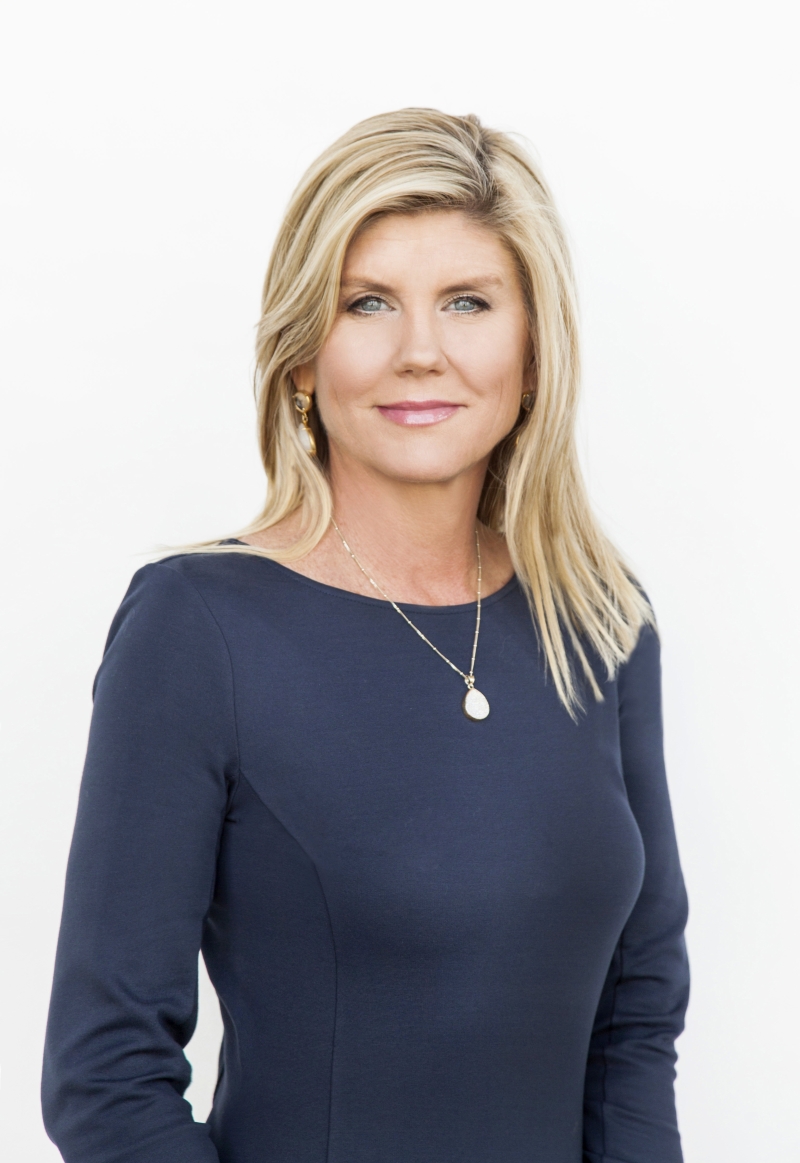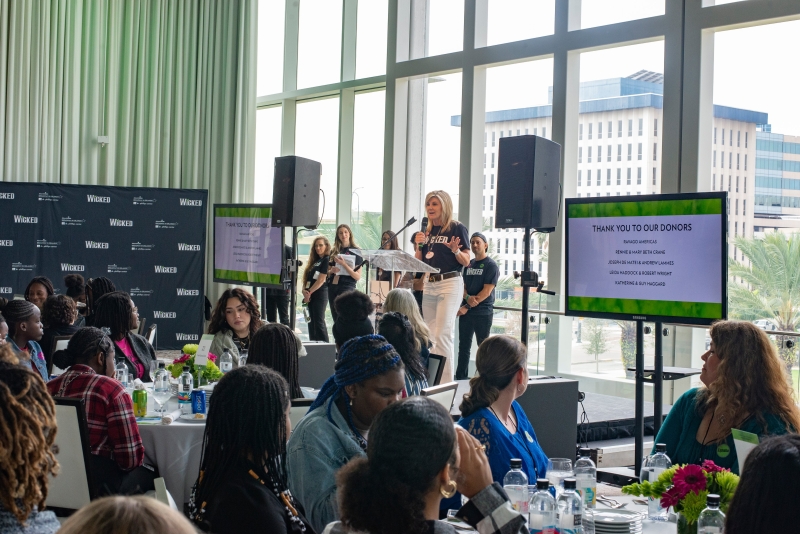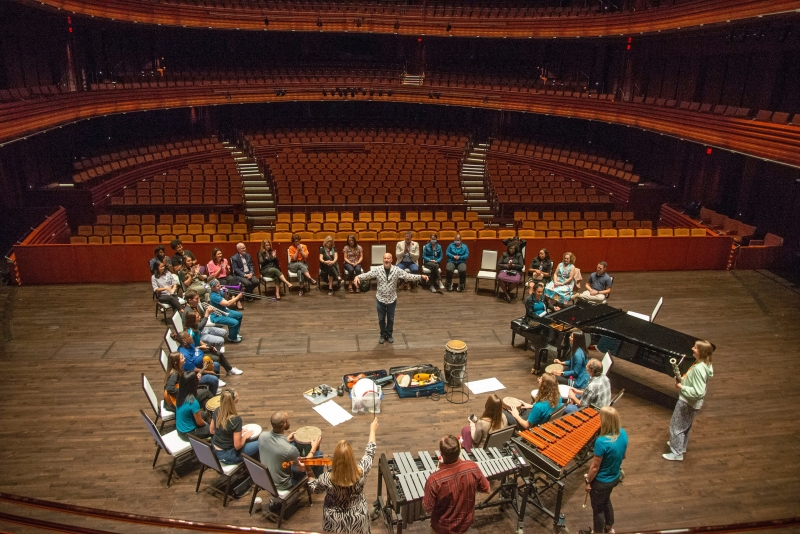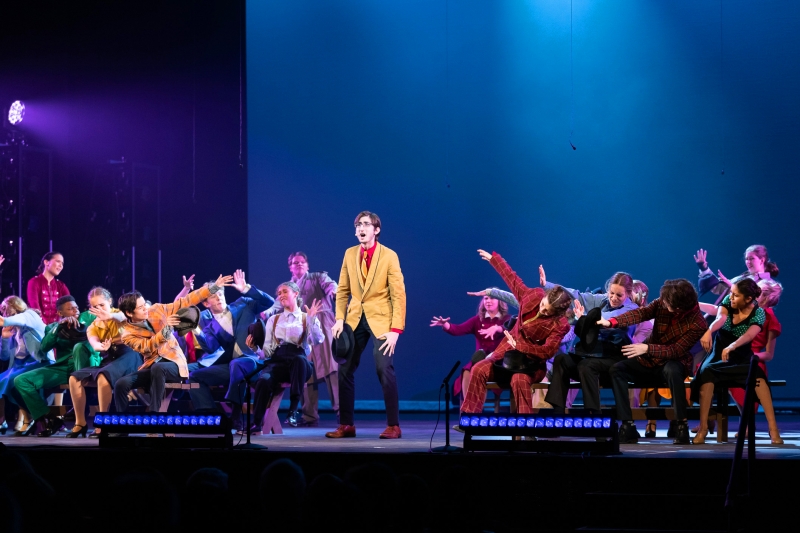Interview: Kathy Ramsberger, CEO of Dr. Phillips Center For The Performing Arts
Sharing about her journey helping to bring the center to life, its impact on the community and what’s in store for the future
 One of the first things I realized when I moved to Orlando back in 2020 was the extremely active and vibrant arts scene. This came as a real surprise because, as an outsider, I had previously only associated the area with theme parks and tourism. I quickly learned about the wealth of talent, artistic offerings and culture available to us all here in the City Beautiful and of the amazing venues and spaces where art and culture happen every day and have since had a chance to personally experience so many of those spaces as I review performances there. One of those key spaces, or cultural "hearts" of the city, is the Dr. Phillips Center for the Performing Arts - a stellar, state of the art venue that houses multiple performance spaces and makes its mission to provide "Arts For Every Life". To learn more about the Dr. Phillips Center and everything it has to offer today (and for the future), I sat down with CEO Kathy Ramsberger who provided a bit of background on her own journey and discussed the role the center plays bringing arts and culture to the people of Orlando and beyond.
One of the first things I realized when I moved to Orlando back in 2020 was the extremely active and vibrant arts scene. This came as a real surprise because, as an outsider, I had previously only associated the area with theme parks and tourism. I quickly learned about the wealth of talent, artistic offerings and culture available to us all here in the City Beautiful and of the amazing venues and spaces where art and culture happen every day and have since had a chance to personally experience so many of those spaces as I review performances there. One of those key spaces, or cultural "hearts" of the city, is the Dr. Phillips Center for the Performing Arts - a stellar, state of the art venue that houses multiple performance spaces and makes its mission to provide "Arts For Every Life". To learn more about the Dr. Phillips Center and everything it has to offer today (and for the future), I sat down with CEO Kathy Ramsberger who provided a bit of background on her own journey and discussed the role the center plays bringing arts and culture to the people of Orlando and beyond.
Joseph Harrison: Dr. Phillips Center for the Performing Arts has been a part of your life for two decades. Can you tell us a little about your journey to where we are today?
Kathy Ramsberger: I was asked to be part of the project back in 2003 with our chairman, Jim Pugh and Mayor Buddy Dyer. There had been some good and valiant efforts to get the arts center built before that, but I don't think the city was ready to be aligned yet. So, when we started in 2003 the first thing we said was "let's see if we can evolve an industry and create a place where everyone feels like they can be part of arts and culture whether they were raised with it or not." I got involved to write the business plan and to answer three questions "What should it be?", "What should it cost?", and "Who should pay for it?" And even though those are simple questions, they took about a year and a half to answer with feasibility studies and everything from operational studies, to touring opportunities that were here, to how many theaters, to what type of business model. We considered every different scenario. About eight months into the effort, we realized it didn't need to be a public entity, so we formed a 501(c)3 and that's when the project really got started. After we answered the feasibility study, we then pursued the funding behind the business approach. By 2007 we had aligned around all three questions, and we built from there. It took a little bit longer because we got caught in a couple economic downturns and some political transitions, so we had to phase the project. That's why it seems like it is a new project that just opened but it started 20 years ago. So, I have had the great pleasure to watch it come from absolutely nothing, just a blank piece of paper, to having it be alive every day filled with wonderful colleagues and hundreds of thousands of people who come here every year.
That must be particularly thrilling, to be there at the beginning and to still be there every day to see what it has become and the impact it is able to make in the Orlando community.
Yes, it is, and we are still building. Jim and I didn't jump into this because we wanted to get a building built, we did it because we wanted to build a business that happened to be in a building. We are still building the nine acres, and that is exciting to me - building something around these multiple venues.
Have you always been in the arts business?
Before this I was in the film industry and prior to that I was in the design industry - entertainment design. So, I have always been involved in entertainment design in some form or another.
Looking back on the last twenty years of work with Dr. Phillips Center - what would you say has been the biggest challenge?

Honestly? Alignment. We had all the keys to success. We had a really big idea and we had strong leadership that was determined to achieve the big idea. Typically, most arts centers take about 20 years to build for a number of reasons, that's the timeframe to design and build once you have all the funding in place and you have those three questions answered. For comparison, a typical building takes two and a half years to build from start to finish and a performing arts center takes almost three years for design and another three and a half to build. And there's a lot of transition that happens even before you even open your doors. Lots of different things can happen during those six years that can delay the project. COVID is a great example of that. Another good example is if you have a change in governmental entities or funding structures in an economic downturn. And you need to get the community aligned too. Today we have 17,000 donors but, in the beginning, we started with one. Your donors need to believe in something you are actually going to deliver on. So, over the course of time, you have to keep your donors aligned, you have to keep your board members aligned. And when the product changes, that can weaken alignment. For example, when we had to phase the project in 2009 and take Steinmetz Hall off - right there you have a huge issue. You have all the people who gave you funding to build an entire building and now you are only building 2/3 of it. Then there is a concern that you may not build the rest of it. So, alignment is really the most important thing.
How do you feel the vision - "Arts For Every Life" - comes to life at the Dr. Phillips Center?

When we started the project - trying to figure out what it should be - we realized that we needed to ask a lot of different people not just the affluent or those associated with classical music what they wanted. So, we spoke with 10,000 different people - every different type of person, community, age and ethnicity - and we asked what they would love to see in an arts center, what they would dream about if they had one. We took all those key words and put a stake in the ground, that every time we make a decision, we are going to ask ourselves if it feels right for everyone. So, when we started designing the project, we included a great deal of diversity in the design and the construction. Some of that is required with using public money but we exceeded it by multiple percentage points. When we began hiring our team early on that was also part of it. When we program in the building, we are very conscientious about what types of works we are bringing into the building so it's not the same thing for the same person. You don't need to be wealthy to love opera you just need to have a chance to get to know it. You don't have to be from the south to love country music. Our goal is to ensure that different audiences feel comfortable exposed to all forms of art but that we also offer every form of art for those that already love it. So, it's through programming, hiring of staff, how we train people in customer service, to how it's designed - with the doors that all open and everyone enters at the same level. The building is extremely transparent, that's also key. "Arts For Every Life" also drove how we designed our lobby. Most arts centers have very small lobbies, and the building is an invitation to go to your seat. Our center, people come 90 minutes before a show and take advantage of the 45 points of sale where most arts centers will have only 4 or 5. So people come and see all types of other people there too and connect with each other before going into the theatre and connecting with what's on stage. Then when they leave there's this great sense of conversation as well. So that's how "Arts For Every Life" is integrated into our day-to-day business.
I think a lot of people here in the community aren't aware of all the educational programs you offer there at the center. Can you share a little more about that?

We believe that anyone who comes into the building learns something, are enriched and leaves changed just a little bit. So just being in the building is educational. But we do have an educational team who creates a lot of programs for youth and for seniors. Through our arts education programs we provide classes and do camps year-round. We also produce and present youth plays. We adjudicate youth theater from around the region and present the region's "Tony Awards," known as our Applause Awards, and the winners of that experience are flown out to New York to be part of The Jimmy Awards - we fund, manage, direct and produce the entire Applause Awards in Walt Disney Theater. We recently completed a really interesting program called Strokestra where we brought in London's Royal Philharmonic Orchestra and AdventHealth clinicians and did a whole workshop with stroke survivors in a study of music therapy. Every year we bring in a phenomenal dance company named Pilobolus for a week residency and they will work with seniors from Orlando Lutheran Towers, neurodivergent students from OCA and high school students from various schools in the community to create an original work and perform in our Alexis & Jim Pugh Theater. We have a program called "Project WoW" in underserved communities working to improve learning outcomes in preschool students by mentoring preschool teachers in lessons that encourage student exploration and interpretation of science through movement. We administer a wonderful 3-year program developed by Disney Theatrical group called Disney Musicals in Schools where we are currently working with 13 Title I schools in Orange, Osceola and Seminole Counties to build sustainable musical theater programs. And then at the end of the year they all come to the Dr. Phillips Center and get to perform one or two numbers for the whole group. We are also the largest ticket buyer in our market who raises money and purchases tickets for underserved kids. This year alone we have already exceeded 2000 Broadway tickets for beneficiaries in our community. We support that giveback initiative with an educational component and provide brunch ahead of the show. We also purchase and distribute swag for all attendees - all done and funded by the center. We also do chat backs and master classes - we try to do two per show - one for the general public and one for teachers.
With all the amazing things happening at Dr. Phillips Center today - what's next? What can we expect in the next five to ten years?
The actual project still has a lot more to do. We have another phase which includes three additional performance spaces and a multi-family residential tower. The whole three acres has a master plan that we are rolling out in the next three or four months. In that plan there's another 750-seat theater, there's a 10 - 12,000 sf immersive space, and this is just all we are dreaming. We are in the next phase of what's the big idea - asking those three questions again. So those components I just touched on are part of that first question "What could it be?" None of it is solid, but we have a nice Phase Three that we want to finish in four to five years. The center is getting more involved in content as well. We are asking ourselves how we can be a destination to accelerate theatrical works and provide means to support wonderful potential for new works. We also have a jazz orchestra that we need to keep growing. And opening Judson's in less than a year, that's going to be a ton of fun. So, we are busy, entrepreneurial in many regards and see so much opportunity here.

Look for more information about all the amazing performances and programs Dr. Phillips has to offer here on BroadwayWorld.com. Dr. Phillips Center for the Performing Arts is a private nonprofit 501(c)(3) organization in downtown Orlando supported by the City of Orlando, Orange County, the City of Winter Park, the State of Florida and generous donors and sponsors. The 698,312-square-foot venue includes the grand 2,711-seat Walt Disney Theater, the community-theater style 296-seat Alexis & Jim Pugh Theater, the new adaptable 1,464-1,770-seat Steinmetz Hall and, opening in 2023, the dynamic cabaret-style music room Judson's. In addition, the venue has various versatile event spaces like the DeVos Family Room, the Rooftop Terrace and the 3-acre outdoor Seneff Arts Plaza. In addition, the arts center's AdventHealth School of Arts offers classes, camps and pre-professional productions. For more information, visit drphillipscenter.org. Follow on YouTube, Instagram, and Facebook
Comments
Videos

